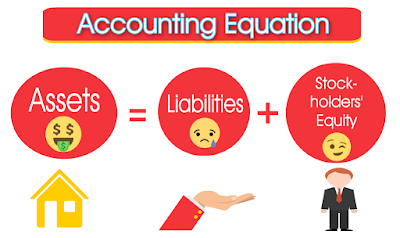The primary focus for financial accounting information is to provide information useful for:
A. Option a
B. Option b
C. Option c
D. Option d
2. What is the primary purpose of financial accounting?
A. Determine
the amount of tax liability owed to the government.
B. Communicate business transactions to internal management.
C. Measure business transactions and communicate those measures to external users to make decisions.
D. Measure the profitability of the company in order to assist employees with making decisions.
B. Communicate business transactions to internal management.
C. Measure business transactions and communicate those measures to external users to make decisions.
D. Measure the profitability of the company in order to assist employees with making decisions.
3. Financial accounting does not deal with which of the following?
A. Measuring
a company's economic activity.
B. Preparing financial reports.
C. Making business decisions.
D. Communicating financial results to investors.
B. Preparing financial reports.
C. Making business decisions.
D. Communicating financial results to investors.
4. Which of the following groups is not among the external users for whom financial statements are prepared?
A. Creditors.
B. Regulators.
C. Investors.
D. Managers.
B. Regulators.
C. Investors.
D. Managers.
5. Financial
accounting:
A. Provides information primarily for external decision makers.
B. Provides information primarily for a company's employees.
C. Provides information primarily for the use of managers of the company.
D. Is primarily used to compute a company's tax obligation.
A. Provides information primarily for external decision makers.
B. Provides information primarily for a company's employees.
C. Provides information primarily for the use of managers of the company.
D. Is primarily used to compute a company's tax obligation.
6. The primary purpose(s) of financial accounting is (are) to:
A. Measure
and record business transactions.
B. Prepare federal and state tax returns.
C. Communicate financial results to investors and creditors.
D. a and c
B. Prepare federal and state tax returns.
C. Communicate financial results to investors and creditors.
D. a and c
7. Which definition below best describes financial accounting?
A. Process
of measuring income taxes owed to the government.
B. System of maintaining communication with a company's customers and suppliers.
C. Procedures designed to enhance the company's image to potential investors.
D. Measuring business activities and communicating them to external parties.
B. System of maintaining communication with a company's customers and suppliers.
C. Procedures designed to enhance the company's image to potential investors.
D. Measuring business activities and communicating them to external parties.
8. The
accounting equation is defined as:
A. Assets = Liabilities + Stockholders' Equity.
B. Assets = Liabilities - Stockholders' Equity.
C. Net Income = Revenues - Expenses.
D. Liabilities + Revenues = Assets.
A. Assets = Liabilities + Stockholders' Equity.
B. Assets = Liabilities - Stockholders' Equity.
C. Net Income = Revenues - Expenses.
D. Liabilities + Revenues = Assets.
9. Which statement below best describes the accounting equation?
A. The
change in retained earnings equals net income less dividends.
B. Equality of revenue and expense transactions over time.
C. Resources of the company equal creditors' and owners' claims to those resources.
D. Financing activities equal investing and operating activities.
B. Equality of revenue and expense transactions over time.
C. Resources of the company equal creditors' and owners' claims to those resources.
D. Financing activities equal investing and operating activities.
Assets
= Liabilities + Stockholders' Equity.
10. If
a company has stockholders' equity of $60,000 at the end of the year, which of
the following statements must be true?
A. The company's assets exceed liabilities by $60,000.
B. The company has issued $60,000 of common stock.
C. Net income for the year equals $60,000.
D. Total revenues earned during the year equal $60,000.
A. The company's assets exceed liabilities by $60,000.
B. The company has issued $60,000 of common stock.
C. Net income for the year equals $60,000.
D. Total revenues earned during the year equal $60,000.
Assets
- Liabilities = Stockholders' Equity.

No comments:
Post a Comment